Content from the Brookings-Tsinghua Public Policy Center is now archived. Since October 1, 2020, Brookings has maintained a limited partnership with Tsinghua University School of Public Policy and Management that is intended to facilitate jointly organized dialogues, meetings, and/or events.
Fresh from reworking U.S. trade agreements with North American partners, the European Union, and South Korea, the Trump administration is focusing on its biggest trade irritant, China. In confronting China, President Trump enjoys support from a policy community worried about China’s military assertiveness and willingness to flout global norms in fields ranging from international investments to intellectual property.
But President Trump’s demands on China have ranged all over the map, demanding at one point that China reduce its bilateral trade surpluses, later that it drop the “Made in China 2025” technology initiative, and now that it eliminate tariffs that adversely affect Republican voters. This new charge of election meddling—which President Trump laid out in remarks on nonproliferation to the U.N. Security Council—has been recently amplified by Vice President Pence in even harsher terms that stopped just short of calling for full disengagement from China.
Calls for disengagement are premature and dangerous; earlier steps must include finding better U.S. strategies for dealing with China. U.S. policy needs clearer objectives, a more realistic approach, and better tactics to achieve its goals. Today’s reflexive, tit-for-tat tariff escalation is proving ineffective and may cause lasting damage to both economies and to the critical U.S.-China geopolitical relationship.
U.S.-China trade issues
The United States has inter-related problems with China and at different times has emphasized different issues, confusing Chinese negotiators. President Trump has made a big deal of the bilateral trade imbalance. Economists do not see this as a problem. China’s overall current account surplus, the broadest measure of trade, is down to about 1 percent of GDP in 2018. China has deficits with many countries that export natural resources and surpluses with some advanced economies, like the United States, that import its manufactured goods. The administration could probably reach an agreement to sell more to China, especially agricultural and energy products. Other things equal, this would reduce China’s bilateral surplus. But the United States would then likely sell less of those products to other countries so that those bilateral imbalances would worsen. Nothing real would have happened.
A second and more important issue is that China has many market access restrictions. Some of these are old-fashioned protectionism: For many years, China had a 25 percent tariff on auto imports. That has recently been reduced to 15 percent, but such taxation is still high in today’s world. There are also many sectors in which China restricts direct foreign investment, usually by requiring foreign firms to be minority partners in joint ventures. Here, China is out of step with practices in other large emerging markets such as Brazil, India, and South Africa. This investment protectionism puts foreign firms at a disadvantage and results in their transferring technology to Chinese state enterprises that will eventually be their competitors. But China is now showing willingness to reduce restrictions in autos and financial services. This is a good start and a promising area in which Washington could make real progress in negotiations.
A third issue closely related to the second is technology competition between these two biggest economies in the world. These two spend the most, globally, on research and development, and there will naturally be competition to develop the technologies of the future. As long as it is on a level playing field, such competition is healthy. Each is likely to make breakthroughs. The innovators will capture some of the benefits, but the nature of technology diffusion is that much of the benefit will spread to the whole world.
Yet China distorts this competition in multiple ways. Chinese firms operating behind protective barriers often gain extra resources to take their innovations out to the world. China’s industrial plan, “Made in China 2025,” sets targets for domestic self-sufficiency in key industries, and some tools to achieve these goals will violate market-oriented rules. Direct subsidies to innovators and to state-owned enterprises also tilt the playing field toward China’s technologically sophisticated companies. Weak international property rights protection in China, especially for foreign firms, puts U.S. technologies at risk. Finally, as suggested by recent reports, China still condones cyber theft of commercial secrets. Pushback against these policies is needed, but it would be far more effective if mounted by a global coalition of the United States and its allies.
It is better to manage the competition than to assume that it is headed for conflict.
More difficult issues arise for technologies that have defense applications. Each side has trade and investment restrictions concerning defense-related technologies. The key issue here is to identify and update the areas that need to be restricted for legitimate security reasons. At the same time, these restrictions must not be allowed to become excuses for protectionism.
To address these multiple concerns, some voices in Washington are calling for the United States to disengage from China. They argue that it will not be possible to have fair competition and that the two countries are likely to be in conflict in the future. This is a dangerous idea. First, our allies are not going to follow us if we adopt a Cold War policy of trying to contain China. Second, an isolated China will have even stronger incentives to adopt unfair practices to achieve economic and technological parity. It is better to manage the competition than to assume that it is headed for conflict.
Trade war as a tactic
The rapid, wide-ranging escalation of tariffs in the U.S.-China trade war has no precedent in the years since the Great Depression. The war began in early 2018 with U.S. tariffs on solar panels and washing machines, and has now escalated to covering $250 billion of U.S. imports from China (see table below). China, in turn, has imposed tariffs on the bulk of its imports from the United States. These actions—mostly unilateral and pointedly discriminatory—are almost certainly inconsistent with World Trade Organization (WTO) rules.
| Round | First proposed | Imposed | Products | Value of bilateral imports |
| U.S.-1 | October 31, 2017 and November 21, 2017 | January 22, 2018 | Solar panels, washing machines | $10.3 billion |
| China-1 | February 5, 2018 investigation | April 17, 2018, withdrawn May 18, 2018 | Sorghum | |
| U.S.-2 | February 16, 2018 | March 1, 2018 | 25% tariffs on steel and 10% tariff on aluminum | $2.8 billion |
| U.S.-3 | U.S. Trade Representative report, March 22, 2018 |
July 6, 2018 ($34 billion) and August 23, 2018 ($16 billion) |
25% tariff of 1,102 products | $50 billion |
| China-2 | April 2, 2018 | Scrap, pork, fruit, nuts | $2.4 billion | |
| China-3 | April 4, 2018 |
July 6, 2018 ($34 billion) and August 23, 2018 ($16 billion) |
25% tariffs on autos, aircraft, soybeans, agriculture | $50 billion |
| U.S.-4 | April 5, 2018 | September 24, 2018 | 10% tariffs on consumer goods, intermediate goods | $200 billion |
| U.S.-5 | July 20, 2018 | All imports from China | $504 billion | |
| China-4 | August 3, 2018 | September 24, 201 8 | 5-10% tariffs on intermediate inputs, capital equipment | $60 billion |
Sources: U.S. Trade Representative and Chad Bown and Melinda Korp, “Trump’s Trade War Timeline,” Peterson Institute for International Economics, updated September 24, 2018, https://piie.com/blogs/trade-investment-policy-watch/trump-trade-war-china-date-guide
The tariffs applied by the two countries are not “remedies” in the sense of correcting market distortions, nor are they preventing, say, sharp adjustments in a declining industry. On the contrary, they will cause dislocations, raise costs, and increase uncertainty. Their value lies in the possibility that they will force the other side to make concessions, or at least deter it from even worse behavior. If that doesn’t happen—if neither side capitulates to the other’s demands—the tariffs will prove to be costly, mutual mistakes.
And that seems to be where the U.S.-China trade war is headed. These are large, domestically oriented economies that depend lightly on each other’s markets, so punitive tariffs have limited macroeconomic effects. The value added in China’s exports to the United States amounts to about 2 percent of the country’s GDP, down significantly from just a decade ago. United States exports to China amount to only about 1 percent of GDP. In the short run, these tariffs will subtract only a small amount from each economy’s growth. Capitulation on either side is very unlikely.
Over time, the costs of these tariffs will grow. The United States is apparently confident in threatening China because U.S. imports from China exceed U.S. exports to China. But the asymmetry is illusory; tensions are already spilling into areas where the two countries are both consequential, including relations on the Korean Peninsula and between the Chinese and U.S. militaries in the Western Pacific. In these new spheres the potential for mutual damage is still higher.
Meanwhile, rapid-fire retaliations have all but closed off meaningful negotiations. The real issues, noted above, are complex and cannot be resolved by tweaking a ready template, such as existing trade agreements in the case of the South Korea-U.S. free trade deal (KORUS) and the North American Free Trade Agreement (NAFTA). In mid-September, Chinese and U.S. officials apparently agreed to efforts to launch negotiations, but were then undermined by President Trump. With capitulation as the only option, Chinese decision makers halted discussions.
Seeking better results
The self-defeating cycle of tit-for-tar tariff escalation is in neither country’s interest. Even if the U.S. goal were to disengage—an objective that we think would be wrong—that could be accomplished firmly and with fewer side effects with widely based tariffs and prohibitions on specific trade and investment flows. And if the United States does intend to solve genuine problems, it can suspend punitive tariffs while negotiations make progress. Current tariffs are hardening positions rather than producing meaningful effects. They are taxes that make American producers less competitive and ultimately fall on consumers; they are bound to become unpopular over time.
They are taxes that make American producers less competitive and ultimately fall on consumers; they are bound to become unpopular over time.
Avoiding ineffective tariff escalation is not capitulation but smart policy, the first step toward achieving the goal of disengagement or negotiation. An end to tit-for-tat responses—what the Hudson Institute’s Herman Kahn described in 1965, for nuclear war, as the “orgiastic spasm of destruction in which all the buttons are pressed and the commanding officers go home”—will offer immediate economic benefits to both sides and improve the climate for negotiation.
Stopping tit-for-tat escalation is beneficial even for a single country. The value of avoiding an “own goal” –imposing costs on the home economy—is self-evident. In addition, there may well will be advantages for China from some steps advocated by the United States, but it is hard to pursue these ideas in the trade war environment. The trade war plays into the hands of those who want to bolster state enterprises and maintain protectionism. By putting tit-for-tat policies in the rearview mirror, China can focus on long-term priorities. These may include policies that have little to do with the United States, including the China-led Regional Comprehensive Economic Partnership (RCEP) and the Belt and Road Initiative, as well as opening sectors to improve China’s competitiveness. Along these lines, China recently cut tariffs on more than 1,500 products and eased investment restrictions to signal its continued economic opening.
Fruitful agreements between China and United States, however dim they may appear today, are possible. Many in China recognize that recent trends toward centralization have backfired, and that continued growth will depend on renewed “opening up” in sectors ranging from financial services to technology. China can take numerous unilateral steps that will benefit its domestic economy and be welcomed by Americans.
Within reasonable limits, the world’s first and second largest economies cannot disengage fully, regardless of the actions of particular administrations. They will compete in many areas and remain complementary in others. The success of each will depend far more on its own policies than the policies of the other. Their joint goal must be to eliminate irritants, reduce distrust, and wall off areas of rivalry from those that allow mutually beneficial collaboration. Even though neither China nor the United States is currently a party to the Trans-Pacific Partnership (TPP), that agreement establishes guidelines for competition in areas such as internet openness, data mobility, intellectual property protection, open investment, and the neutrality of state-owned enterprises. These issues will have to be addressed sooner or later, whether now or under future administrations.
The Brookings Institution is committed to quality, independence, and impact.
We are supported by a diverse array of funders. In line with our values and policies, each Brookings publication represents the sole views of its author(s).

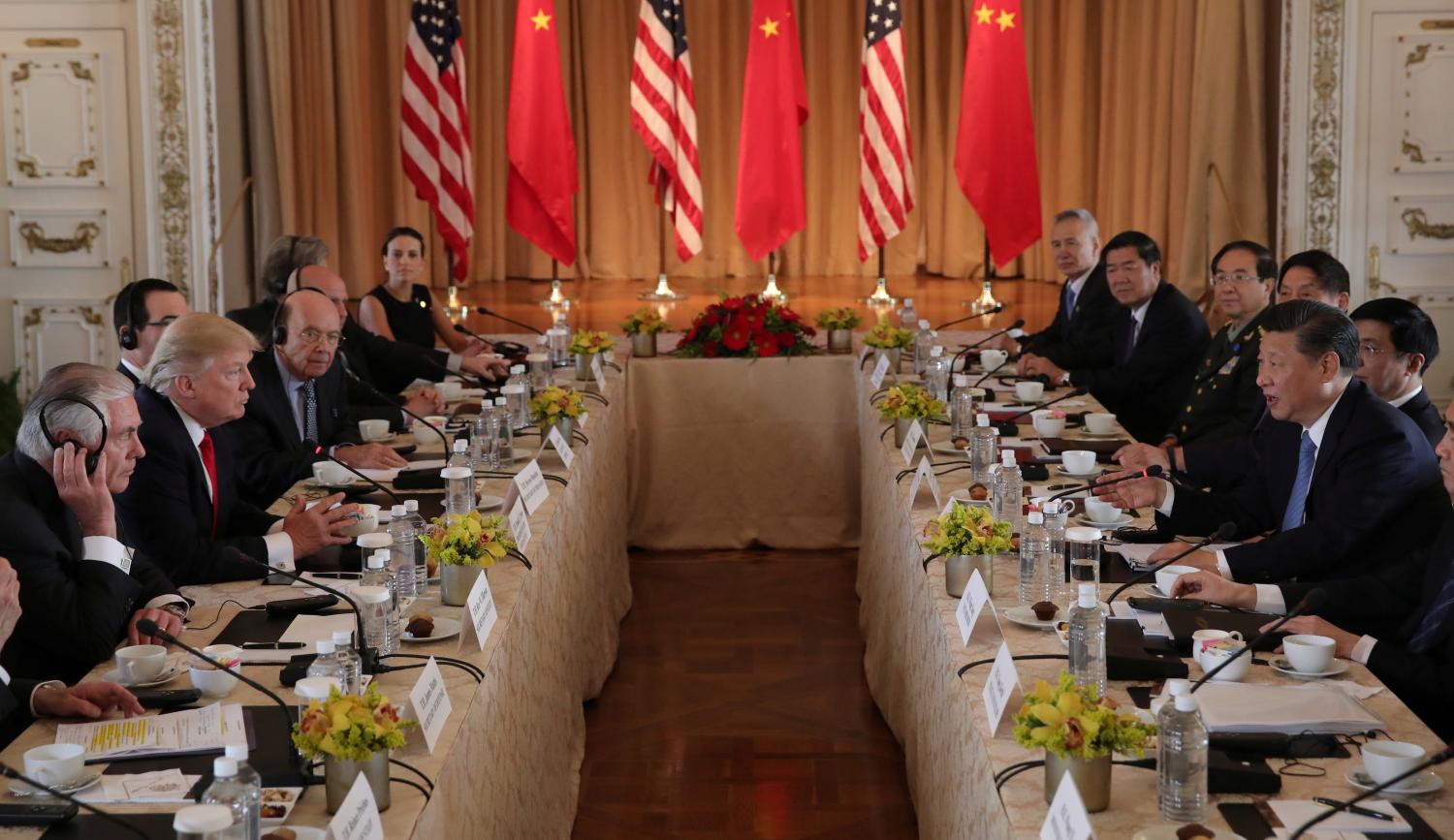
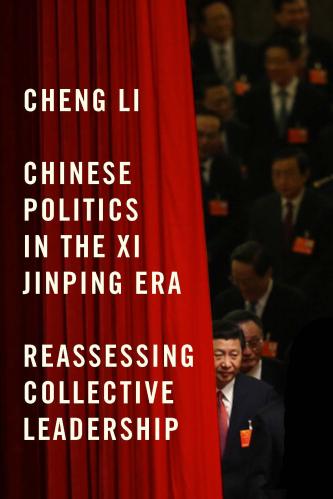
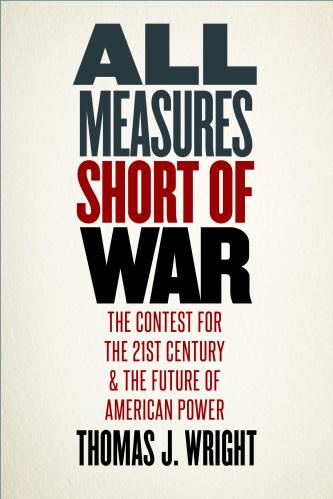

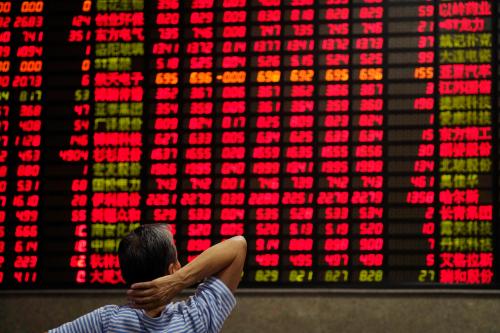


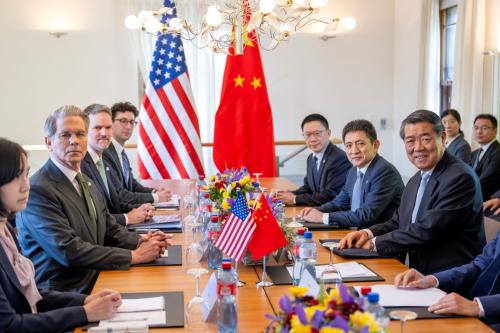
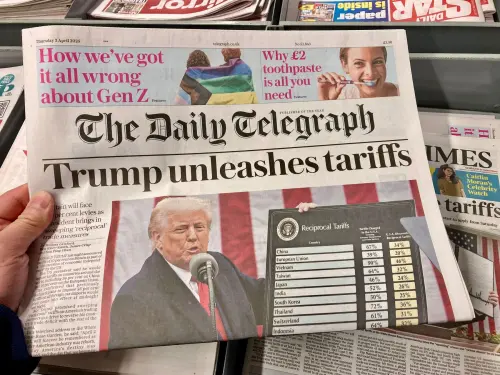
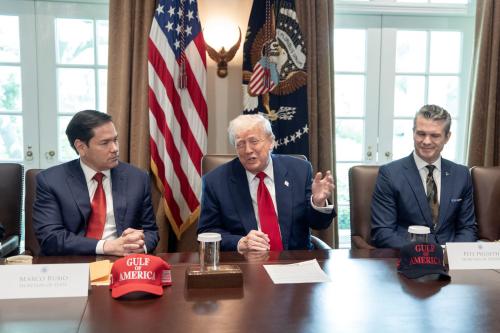
Commentary
Why it’s time to end the tit-for-tat tariffs in the U.S.-China trade war
October 5, 2018